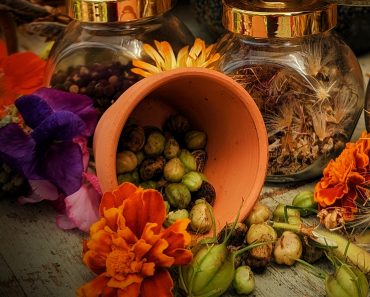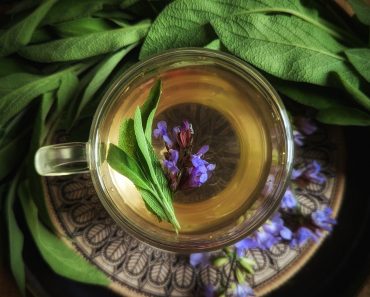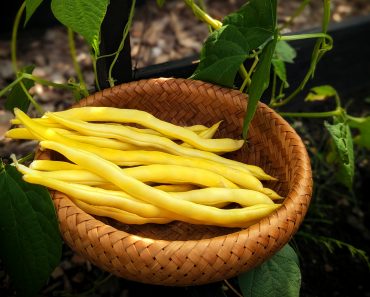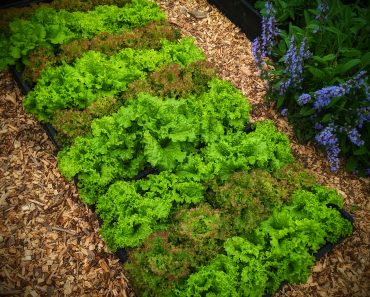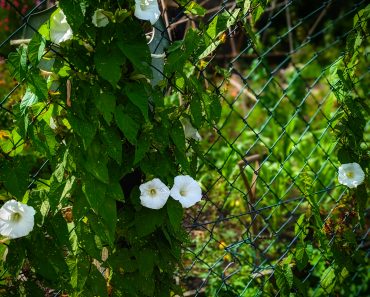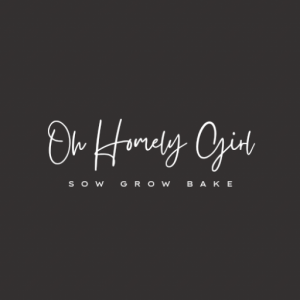Learn about The Wonderful Healing Power of Herb Robert! Herb Robert is a low-growing biennial plant with red hairy stems, often regarded as a weed by gardeners and rarely appreciated for the healing herb it is. Read on to find out how this therapeutic plant can be harvested and used to heal the body…

This Post May Contain Affiliate links please see my disclosure policy
The Plant Of Many Names!
This plant is also known as Cranesbill, Bloodwort, Red Robin, St. Robert’s Wort, Dragon’s Blood, death come-quickly, squinter-pip and my favourite…Stinking Bob! – Due to the unappealing smell of the leaves when they are crushed!
What Is Herb Robert?
Herb Robert is a member of the Geranium family, it is a low growing Biennial plant with bright red stems and depending on where you live, it has pink/purple or white flowers. In the North-West where I live, the flowers are a bright Pink, turning Purple in Autumn. In Yorkshire, Derbyshire and Teesdale the flowers are predominantly White… A shade tolerant Herb, Herb Robert grows all over the UK.
Foraging For Herb Robert
Herb Robert can be found on woodland edges, growing next to walls, on shady river banks, rocky and exposed areas and coastal areas

There are some rules you should abide by if you intend to forage for food or foliage
Only take what you need-Take no more than you plan to consume or use and try to forage over a wide area rather than picking from one patch. Make sure you’re foraging doesn’t disturb the habitats and environments of the local wildlife.
Leave No trace– Leaving no trace of your presence is a sign you have foraged responsibly. Do not trample or disturb roots and only take when there is an abundance of your chosen food or foliage. This allows the plants to replenish and renew.
Don’t Pick from Private land – If you intend to, be sure to get permission first.
Only Pick from Clean areas – Avoid Roadsides, Industrial areas & Top tip* Foraging from the base of a tree for example would not be wise, the likeliness of a dog previously cocking its leg there…is high! If you intend to consume what you have foraged, wash first.
Herb Robert Identification
Herb Robert is a low-growing plant with reddish, hairy stems. The leaves are dark green and are palmately divided, they are around 5-6 cm long. The branches extend to around 30-40 cm with leaves growing at opposite sides of each stem. Dainty pink or white flowers may be visible, they are roughly 15mm across and have 5 rounded petals each.

Why Do We Call It Herb Robert
Herb Robert or “herbe Robert” goes way back to the thirteenth century and derives from the Latin words ‘Herba Sancti Ruperti‘. The unpleasant smell of herb Robert linked the plant to a notorious stinky hobgoblin of German folklore named Knecht Ruprecht, and his mischievous English counterpart, the household sprite Robin Goodfellow also known as Puck- who like the Plant was also red and hairy!
Herb Robert in Ancient Folk Medicine
During Medieval times Herb Robert was a Valuable Apothecary Herb and utilised for a great many ailments. Herb Robert would be dried and ground and snuffed up the nose for congestion, used as an ingredient and baked into cakes for the purpose of curing coughs and healing the lungs. Powdered Herb Robert was also dissolved into wine and drank to ease chest pain, sore throats and loss of voice. The leaves were also used as a means of pest repellent, people would rub the leaves of the plant on their skin to repel mosquitoes.
By The 15th Century herb Robert was recommended as diuretic and a ‘breaker of kidney stones’. For matters of the heart Herb robert would be infused in a cordial drink and prescribed for melancholy, to strengthen the heart and make it merry again
Herb Robert Health Benefits Today
Today this mostly overlooked herb can provide countless benefits to the human body! Herb Robert has so many therapeutic benefits and is incredible for maintaining a healthy Immune system. Let me explain…
Research has shown that Herb Robert is a rich source of germanium, a valuable element that every human body needs. What does Germanium Do? It helps the body make more oxygen available to the cells. What this means is…more oxygen at cell level helps the body to fight disease more efficiently, meaning healing and recovery can be achieved far more easily.
It Doesn’t end there! Herb Robert is a wonderful natural resource for treating…
- Diarrhea
- Improve Liver and gallbladder function
- Reduce inflammation of the kidneys and bladder
- Helps to prevent the formation of stones in the kidney, bladder, or gallbladder.
- Also Often used as a healing Tea for more common ailments such as the flu, headaches, and sinus problems,
- Helps to ease arthritis & sciatica
- Helps to manage High cholesterol
- high blood pressure
- Helps To Staunch bleeding
Did You Know that chewing Fresh Herb Robert leaves can help sooth a sore mouth and throat? You can also add leaves to water and make a mouthwash.. just gargle!
Apply a Poultice of Herb Robert Leaves directly to The Skin to treat insect bites, abscesses, shingles, sun spots etc.
4 Ways to Take Herb Robert for Medicinal purposes
Affiliate links
Useful Tools For Medicine Making!
Useful Tools For Foraging…

1. Make a Tea!
Make a tea for treating Flu, headaches, sinus problems, Diarrhea, Arthritis, Sciatica Kidney, Liver and bladder problems
How To Make a Tea
- Place 4-5 fresh leaves or 1 tsp of dried Herb Robert leaves in a tea ball
- Place the Tea Ball In a cup and fill the cup with boiling water
- let it steep for 4-5 minutes
- Remove the tea ball and drink
2. Make A Poultice!
This option is for when you are treating insect bites, abscesses, shingles sun spots and other skin issues. Also helpful for relieving aching muscles and inflammation, Arthritis etc
How To Make A Poultice
- Place fresh or dried herbs into a muslin cloth or even a white cotton sock!
- Tie a knot in the top of the sock or muslin and soak in hot water for 5 minutes
- Knead the sock or Muslin for a minute to soften and smush the leaves.
- Apply the warm sock or muslin Wrap to the affected area.
3. Make A Tincture!
Useful for treating Flu, headaches, sinus problems, Diarrhea, Arthritis, Sciatica Kidney, Liver and bladder problems
How To Make A Tincture
- Fill up glass jar with fresh or dried Herb Robert Leaves around halfway.
- Add vodka of at least 40% strength until the leaves are completely submerged
- Place a wax disc between the lid and jar
- Don’t forget to abel the jar
- Place the jar out of direct sunlight and shake once a day for 1 month
- After the month, sieve the liquid through a cheesecloth, separating the leaves from the liquid
- Store the liquid tincture in a dropper bottle
To use a Tincture– Using a dropper, drop a small amount into the mouth, just under the tongue. Hold the tincture in the mouth for around 30 seconds before swallowing
4. Make A Salad!
Herb robert is a wonderful edible and nutritious food. For an all round healthy lunch add both the leaves and flowers, fresh or dried to your salads. Why Eat Herb Robert?-Herb Robert is rich in vitamins A, B, and C. It also contains Potassium, calcium, magnesium, iron, phosphorus, and germanium. All the above are wonderful for providing your body with antibiotic, antiviral, diuretic, digestive and antioxidant benefits.
What does Herb Robert Taste Like?
Herb Robert has a mild spicy taste and can add a bit of a kick to salads
Love A Bit Of Foraging? Take A Look At These Posts…
How to Use Horsetail in a Healing Tea
Hot to Forage and Use Cleavers
How To Forage For Three Cornered leek
How To Make Dandelion Root Tea
Looking For More ‘Homely’ Inspo ?
Have a Nosey Around the Blog! See what i’ve been Baking, Growing and Drinking! Also, pop over and say Hi on Instagram
*Any specific health claim or nutritional claims or information provided on the Website are for informational purposes only. Nothing on the Website is offered or intended to be a substitute for professional medical, health, or nutritional advice, diagnosis, or treatment. This Website is not intended to diagnose, treat, cure or prevent any disease. You assume full responsibility for consulting a qualified health professional regarding health conditions or concerns.


